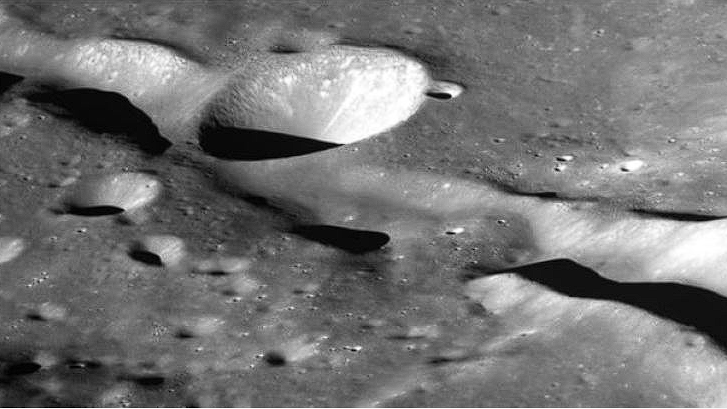South Korea’s science ministry has announced that Danuri, which is Korea’s first lunar orbiter, has captured high-resolution images of the dark side of the moon. These images are part of ongoing research to observe the moon from approximately 100 kilometres above its surface. According to a statement from South Korea’s Ministry of Science on Wednesday, this is the first time a Korean spacecraft has photographed craters, valleys, basins, and other traces of the moon’s dark side, which are difficult to observe from Earth due to the moon being tidally locked to our planet.
Built by the Korea Aerospace Research Institute (KARI) the Lunar Terrain Imager (LUTI) was used to capture high-resolution images of regions on the far side of the moon, including the Szilard and Tsiolkovskiy craters and the Vallis Schrodinger Valley. The ministry stated such high-resolution images would help in understanding the chemical composition of the lunar soil and crater formation.
The Danuri orbiter clicked the images of the Tsiolkovskiy crater area on March 22 and that of the Schrodinger Valley and Szilard crater on March 24. The ministry said the photos taken on March 24 are of immense significance because they were clicked on the day Danuri orbited the moon 1,000 times.
The Korean ministry and KARI also released photos of the POLCAM wide-angle polarimetric camera piggybacking on the Danuri. POLCAM is designed to analyse the size and composition of lunar topsoil particles. The ministry intends to publicise a complete and first polarimetric moon map by January next year.
Danuri’s magnetometer and gamma-ray spectrometer are also collecting observational data. The magnetic field variation data will reveal the moon’s structure and yield its space environment data for upcoming lunar exploration. Danuri’s gamma-ray spectrometer data is designed to research the lunar surface’s X-rays, gamma rays, and neutron environments.
Cho Sun-hak, who is the Director General of the Space Policy & Nuclear Energy Bureau at the Korean science ministry, stated that Danuri is smoothly sending back observational images and data from the moon. The Korean space community intends to bring about varied and novel scientific research results based on the observations.
The lunar orbiter was carried by SpaceX’s Falcon 9 rocket and was launched from Cape Canaveral Space Force Station in Florida on August 5, 2022. The orbiter successfully entered the moon’s orbit on December 27 and has been conducting scientific investigations from there since January this year.





